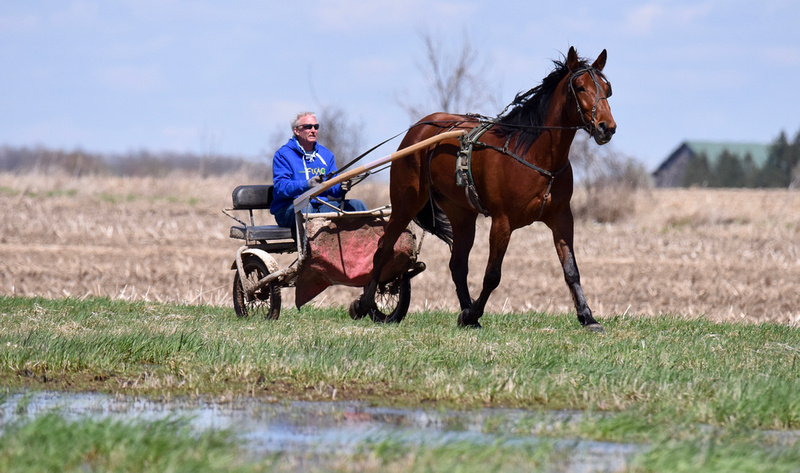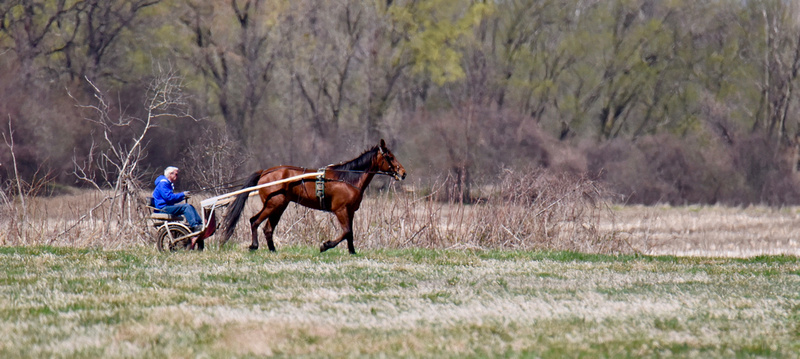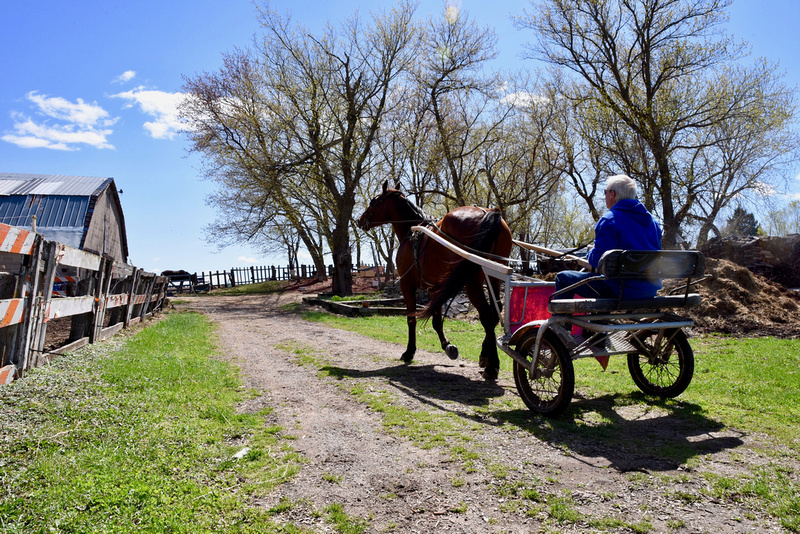On a cool spring afternoon mud flew into my face as I gripped the reigns and attempted to hold my camera under my Carhartt vest laughing with delight as the horse paced faster in front of me. I never imagined I'd get the opportunity to sit in a small little two-wheeled cart called a sulky, let alone be the driver. I was in good hands though, Rusty, the 5-year-old standardbred, knew exactly what his job was as he took a warm-up jog around the dirt track at a farm outside of Beaver Dam. Unfortunately, there's no photographic evidence of me in the driver seat, but there's no chance I'll ever forget it.
Always in search of a good story, I was delighted to hear a few years back that my high school classmate's father, Larry Feilbach, of Juneau, had recently started harness racing after taking many years off from the hobby. I quickly learned that Larry, in fact, hailed from a long line of harness racers. His grandfather John Feilbach, of Clyman raced in the 40's and 50's, his father, Oscar Feilbach, and uncles Bernie and John Jr. Feilbach, all raced in the 1960s and 70s.


Now, first off I have to admit... I love horses. I've grown up riding them around my parents' farm and I'm simply drawn to any type of interesting story that happens to include horses. I've done stories about unique breeds of horses, extremely expensive horses that were jumpers, a wild mustang being trained and I've even done a story on a horse that painted. That's right folks, a horse that gripped a paintbrush in its teeth and painted. There seems to be no end to my fascination with horses.


All of that has led me to my exciting day on the dirt track with Larry and Rusty. One of the main reasons I love my job, is because with every single story I learn something new. Larry and Rusty's story is no different. Larry shared the history behind the sport, what the racing involves, the equipment needed and the work that goes into it. The history of the sport really sparked an interest to me. As Rusty pulled the sulky around the track, Larry explained that the sport started out with friendly farming neighbors racing down dirt roads. I was even more surprised to learn from Larry that just 30 years ago harness racing was a popular event at the Dodge County Fairgrounds, until car racing over took it.


We talked about the unique characteristic of the standard bred. Larry shared that the name standardbred came from the fact that in order to be registered, a horse had to be able to complete a mile in 2 minutes and 30 seconds, which was the standard time back then. Larry explained that those time are not even a good workout in today's world as the record is closer to 1 minute and 46 seconds.
As the horse speeds around the dirt track, its unique pace is a specific part of the breed and the race. While kicking up mud in a pace, Rusty moves both legs on one side of his body at the same time, unlike a trot when the the horse strides with its left front and right rear leg moving forward simultaneously. Some folks say the standardbred's pace can be described as waddling like a duck.




My full article about Larry and Rusty was printed in the Watertown Daily Times in the spring, but they weren't able to include many of my photos. You can search for the article online if you're interested to read more, but take a gander at these photos of Larry with his horse Rusty. I can't think of a better way to spend a spring day than hanging out with these two. The racing season is done for this year, but to check out some harness racing in Wisconsin for next year, visit www.wiharnessracing.com. You won't find any races in Dodge County, but with just a little bit of a drive you can watch one of the oldest sports in America with one of our very own Dodge County racers.

